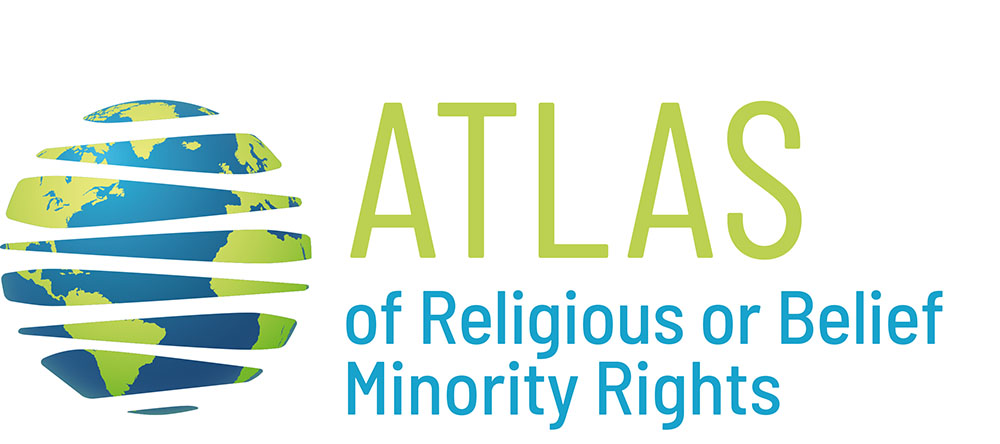HISTORICAL BACKGROUND
Christianity arrived early on in the region that is currently Belgium. It soon became home to thriving monasteries that contributed to its economic and cultural development.
During the Ancien Régime, Catholicism became the region’s established religion (after 1648, Peace of Westphalia). An attempt to curtail the privileges of the Catholic clergy, was made during the Austrian Habsburg period, by the Holy Roman Emperor Joseph II (1741-90), in his efforts to modernise the traditional Catholic Church and to introduce (some degree of) religious freedom, through his Edict of Tolerance of 1781. Joseph II’s efforts in this regard met with vehement resistance, and led to the Brabant Revolution of 1789, resulting in the temporary establishment of the United States of Belgium in 1790.
Shortly after the suppression of this revolt by the Austrians, annexation to France followed in 1795. In the wake of the French Revolution, religious orders were dissolved, privileges abolished, and many churches were confiscated and sold. Napoleon Bonaparte, upon seizing power in 1799, reopened the churches to the public, and restored Catholicism to a privileged position in his “Concordat” of 1801.
In 1815 the region that is currently Belgium split off from the French Empire, along with what are now the Netherlands and Luxemburg, to form the United Kingdom of the Netherlands. This regime, led by the Protestant King William I, provided a significant degree of religious tolerance on paper, guaranteeing freedom of religion and equality of religious communities in the Constitution. However, King William himself was inclined to interfere intensively with the religious life of his subjects (as with other aspects); in practice, Church and State were not separate.
Geographically, the Kingdom’s north was mostly Protestant, while the south was predominantly Catholic. The south objected to William’s rule: the Catholics saw their influence, and privileges, declining, while the anticlerical liberals were disgruntled with the meddlesome northern King for other reasons. Together they forged what went into history as the “monstrous” or “unholy alliance” (Monsterverbond), resulting in the 1830 Belgian Revolution.
Once independent, Belgium drafted one of Europe’s most liberal constitutions, partially by way of (negative) response to the preceding regimes. Young liberal politicians wanted to propagate the modern freedoms and protect them constitutionally, including religious freedom and autonomy (abandoning attempts to exercise absolute governmental supervision over the Church). Equally, it was a time when a rather progressive Belgian Church was prepared to step forward and be a loyal partner in the negotiation of the Constitution, without upholding (formalised) privileges for the Roman Catholic Church. Thus, the Belgian constitution established a regime of exceptionally far-reaching freedoms, including for the freedom of religion, worship, association, education, speech and press, as well as introducing a system of financial state support for religions present in the country.
Rik Torfs and Jogchum Vrielink
Torfs, R., & Vrielink, J. (2019). State and Church in Belgium. In G. Robbers (Ed.), State and Church in the European Union. Baden-Baden: Nomos, pp. 13-14.
RELIGIOUS AND BELIEF MINORITIES IN BELGIUM
Two federal public institutions monitor these classic minorities: on the one hand, UNIA (Centre interfédéral pour l’égalité des chances), an inter-federal center for equal opportunities and the fight against discrimination (particularly religious discrimination), and on the other hand CIAOSN (Centre d'information et d'avis sur les organisations sectaires nuisibles), a public center for information and advice concerning harmful sectarian organizations (which documents all religious or philosophical minority realities, both for and against).
Other ideological currents have felt "minoritized" more recently because of the evolution of Belgian regionalized structures and in particular the establishment of the "linguistic frontier" between Dutch and French areas (1963), which progressively isolates ideological subgroups from the majorities into which they were integrated in the previously unitary state. For example, the freethinkers became a "minority" in the North, the Catholics became a "minority" in the South. However, these are only minorities in a relative and especially political sense. These convictions are still part of the dominant cultural history of the country and are still politically supported by their co-religionists in the other regions.
The growing secularization of Belgium is a process that reconfigures the perception of all “minorities". However, this secularization concerns essentially the Catholic practice. It leads to a triple mutation: Catholicism as a still-dominant cultural heritage, but as an individual practice, it is progressively ignored and silent. It is a Catholicism that used to structure the political space in tandem with a secular and anticlerical alter-ego, liberal and socialist, and which today struggles to be taken into account in a dialectic that is now polarized between secular movements and Islam.
Louis-Léon Christians
RESOURCES

Data and information concerning religious demography are provided by Todd M. Johnson and Brian J. Grim, eds., World Religion Database (Leiden/Boston: Brill).
General information on minority issues (including some references to religious or belief ones) can be found at the page devoted to Belgium in Minority Rights Group International, World Directory of Minorities and Indigenous Peoples.
The text of some legislative acts concerning freedom of religion or belief can be found (in French) at https://justice.belgium.be.
A report on the Belgian legal system and government policies about freedom of religion (with some references to religious or belief minorities) is provided in Department Reports and Publications - United States Department of State.
An analysis of the way religion and religious diversity are governed in Belgium is provided at http://grease.eui.eu.
An overview of the main religious and belief organizations in Belgium is provided (in French) at https://justice.belgium.be.
For an introduction to the State-religion legal system see R. Torfs, & J. Vrielink, Belgium, in G. Robbers, & C. W. Durham (Eds.), Encyclopedia of Law and Religion, Leiden: Brill, 2015 (the table of contents is available at https://referenceworks.brillonline.com.
INTERACTIVE INFOGRAPHICS
0 respect of international standards
-1 restriction of rights
0 equal treatment of RBMs
-1 high gap between religious majority and minorities

 MENU
MENU
 CLOSE
CLOSE

